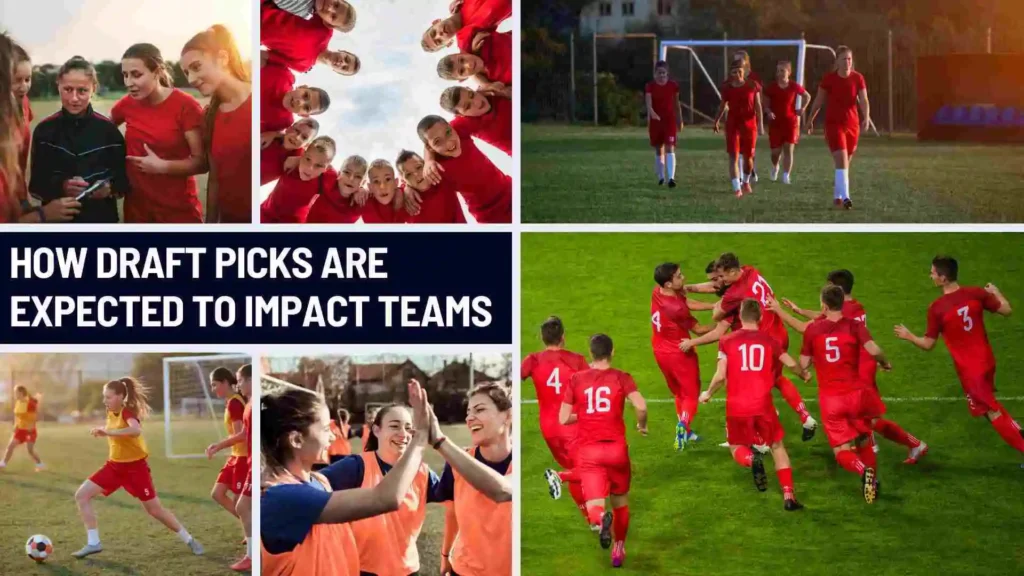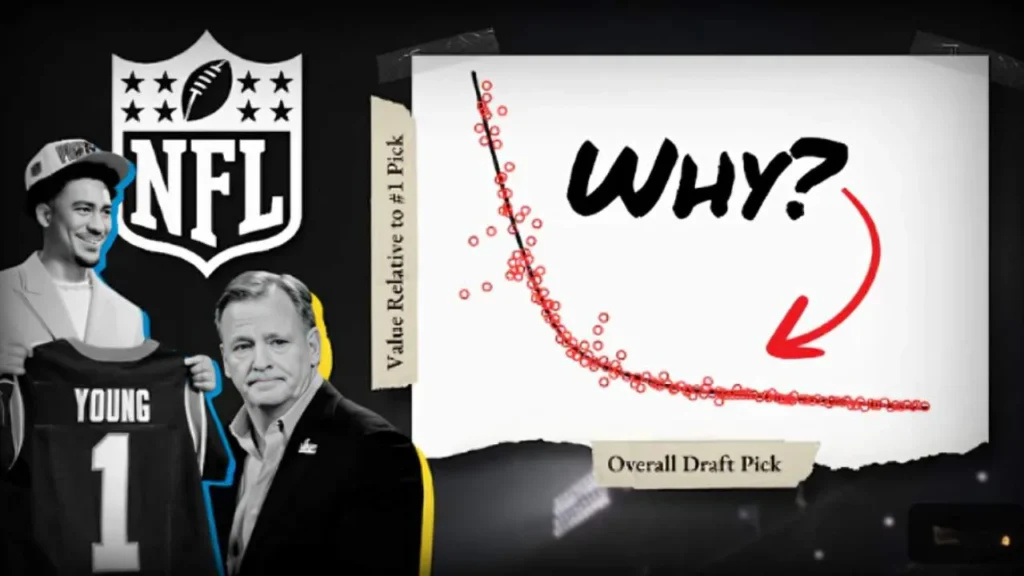SPORTS
Exploring the Reasons Unsuccessful Draft Pick in Sports

An unsuccessful draft pick is a player who gets drafted but does not meet the potential that their draft position commands. Usually picked in the higher rounds, these players are expected to come in and make immediate impacts for their respective teams. When they don’t, due to underperformance, injuries, or any other reason, they are often given the tag of an unsuccessful draft pick. In pro sports, success for a player is generally measured by his on-the-field impact, tenure in the league, and contribution to team success. High draft picks come with high expectations that can mean starters, awards, or maybe a transformation in the franchise’s fortunes.
Table of Contents
Brief Overview of How Draft Picks Are Expected to Impact Teams
Many franchises emphasize the acquisition of draft picks, as they are the best opportunity to select and provide players who will fill the team’s current needs and establish a foundation for winning. High draft picks, especially in the first round, are often keys to a team’s success, providing financial stability in decision-making. Great picks will lead to better performance, more fans, and higher revenue, and wrong picks will set teams back years, forcing more resources into filling underperformances.


Early Draft System and Its Evolution
The draft system in professional sports began in 1936 to ensure competitive balance by distributing new talent evenly among teams. Other leagues, like the NBA, MLB, and NHL, adopted similar systems to maintain fan interest. Over time, draft systems have evolved to address challenges and improve fairness. In 1985, the NBA introduced lottery systems to discourage tanking, while the NFL refined its scouting combine and implemented rookie wage scales. MLB introduced international drafts to regulate foreign talent influx.
The Draft Process
Draft pick selection is a complicated and long process that needs a lot of preparation and analysis. Every team must first detect its needs and look at potential players way before the actual draft takes place. This involved watching game films, and live games, and holding extensive conversations at combines and pro days, where players showcase and display what they can do or are capable of. Indeed, scouts and analysts have to dig deep into many things related to athletic skills, technical skills, the quality of mental toughness, and character. Advanced data analytics define more and more the player’s metrics and his potential.
Teams also ensure they have met and talked with the players regarding fit and potential off-field concerns. Then, all this amassed information and strategy have to be resolved on the draft night in making decisions like filling key positions and keeping a balance on the roster for the team’s long-term development. At the end of the day, the focus should be on picking players who can fill immediate needs and develop into contributors who warrant future team success.
Analysis by Draft Rounds
Analyzing draft picks in different rounds offers valuable insights into a team’s decision-making process. Early rounds focus on securing star players, expected to be game-changers. As teams move into the middle rounds, they take calculated risks on players with potential but uncertainty, requiring scouting and player evaluation. Later rounds are aimed at finding hidden gems or role players, which may not always align with expectations but can still offer value if developed properly. Each round presents unique challenges and opportunities for teams to build a winning roster.


Common Metrics for Evaluating Success
Success for draft picks is commonly evaluated through metrics such as playing time, statistical performance, accolades (e.g., Rookie of the Year), and contributions to team success (e.g., playoff appearances). Long-term metrics include career longevity, leadership roles, and legacy impacts. These metrics help teams and analysts determine whether a player has met, exceeded, or fallen short of the expectations set at the time of their selection.
Major Causes of Unsuccessful Draft Picks
- Talent Evaluation Errors: Misjudging a player’s abilities or failing to accurately predict how their skills will transition to the professional level.
- Injuries and Health Issues: Serious injuries or chronic health problems that prevent players from reaching their full potential and performing consistently.
- Poor Fit with Team System or Culture: A player’s playing style or personality does not mesh well with the team’s strategy or environment, hindering their ability to succeed.
- Personal and Psychological Factors: Issues such as lack of motivation, poor work ethic, or mental health challenges affecting a player’s performance and development.
- External Circumstances: Situational factors like team instability, frequent coaching changes, or lack of support systems impacting a player’s growth and performance.
- Pressure and Expectations: The intense pressure and high expectations placed on early-round picks can overwhelm young athletes, negatively affecting their performance and confidence.
- Character and Off-Field Issues: Behavioral problems, legal troubles, or poor conduct off the field that distract from or undermine a player’s on-field performance.
Consequences of an Unsuccessful Draft Pick
Impact on Teams
If he turns out not to be successful at the sport they play, then the performance and success of the team take a hit. Teams invest their time, resources, and hopes on a draft pick, considering them as an opportunity that would culminate in positives for growth and competitiveness. But sometimes high picks turn into busts, thus disrupting the plans and strategies, causing the morale of a team to be shot and bringing about wasted opportunities for improvements and the inability for them to change plans and strategies. A poor pick also puts undue pressure on the team’s budget; bad investments will hold back changing rosters. In sports, the draft process is very keen on keeping an advantage in professional leagues.


Impact on Players
Being deemed a bad drafting pick can have a serious effect on the player because, as a matter of fact, it puts serious pressure on the player to live up to the bill and expect to prove a point. It can generally affect careers, mental health, confidence, and self-esteem. Critics from fans, the media, and teammates really put a load of responsibility on the players who have failed to hit the high mark placed upon them. Feelings of failure or disappointment will be brought on when they cannot live up to the hype of being drafted.


The Human Element
Draft picks in professional sports involve a deep human element, as they often involve young athletes with high expectations and dreams of making it to the big leagues. However, underperforming draft picks can have devastating consequences for these athletes’ careers and personal lives. The pressure placed on these athletes and the mental toll of being labeled a bust can affect their confidence and future prospects. Team managers also feel the weight of responsibility when making draft selections, knowing that one wrong choice could have far-reaching consequences.
Lessons Learned and Mitigation Strategies
The mistakes made by other sports organizations when dealing with draft picks mean that there are lessons learned over time. From previous failures, countless lessons are often drawn, which then lead to the development of solid mitigation. This includes better evaluation of talent where advanced analytics and more in-depth scouting are increasingly important for better talent evaluation, as well as aggregation of a player’s skill set and its match with a certain team’s system and culture. Mitigation would then be administered through hard-nosed injury-prevention protocols, and effective programs in developing players’ skills, and expectations.


Character assessment has gained prominence, ensuring players with strong ethical standards and professionalism are prioritized. Adapting to external factors such as team stability and market demands remains pivotal, alongside a balanced approach to drafting that considers both potential and proven performance. Continuous learning and adaptation drive these efforts, enabling teams to refine their draft strategies and maximize the success of their selections in competitive sports environments.
Future of Drafting in Sports
The future of sports drafting presents both challenges and opportunities. With advancements in data analytics and scouting techniques, teams can make informed decisions on draft day. Focusing on player development and understanding what makes a prospect valuable can increase the chances of finding superstar players. Investing in comprehensive scouting programs, fostering strong team cultures, and prioritizing long-term success can set organizations up for sustainable growth.
-



 GENERAL3 weeks ago
GENERAL3 weeks agoUncovering the World of кинокрадко: The Dark Side of Film Piracy
-



 GENERAL2 weeks ago
GENERAL2 weeks agoUnveiling the Art of преводсч: How Translators Bridge Language Barriers
-



 GENERAL3 weeks ago
GENERAL3 weeks agoThe Journey of iamnobody89757: From Anonymous User to Internet Sensation
-



 YOGA4 months ago
YOGA4 months ago4 Person Yoga Poses for Beginners





















